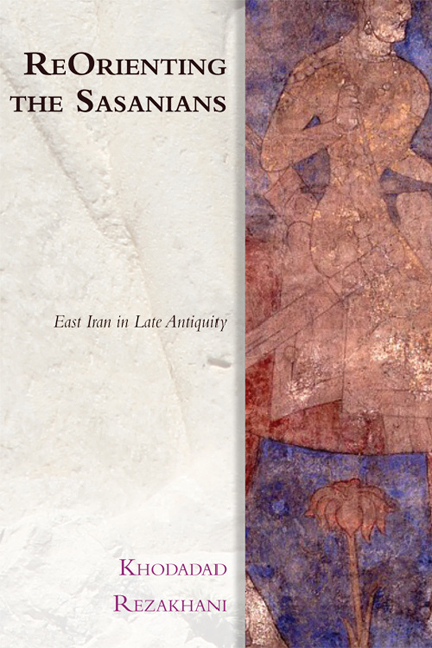Book contents
- Frontmatter
- Contents
- List of Illustrations
- Acknowledgements
- Series Editor's Preface
- Maps
- Preface
- Introduction
- 1 The Sasanians and the Sistanis
- 2 The Kushans and the Sasanians
- 3 The Kushano-Sasanians in East Iran
- 4 The Iranian Huns and the Kidarites
- 5 The Alkhans in the Southern Hindu Kush
- 6 The Hephthalite ‘Empire’ and its Successors
- 7 Sogdiana in the Kidarite and Hephthalite Periods
- 8 The Nēzak and Turk Periods
- 9 Tokharistan and Sogdiana in the Late Sasanian Period
- 10 General Conclusions and Postscript
- 11 Epilogue and Excursus on the Shahnameh
- Bibliography
- Index
8 - The Nēzak and Turk Periods
Published online by Cambridge University Press: 07 December 2017
- Frontmatter
- Contents
- List of Illustrations
- Acknowledgements
- Series Editor's Preface
- Maps
- Preface
- Introduction
- 1 The Sasanians and the Sistanis
- 2 The Kushans and the Sasanians
- 3 The Kushano-Sasanians in East Iran
- 4 The Iranian Huns and the Kidarites
- 5 The Alkhans in the Southern Hindu Kush
- 6 The Hephthalite ‘Empire’ and its Successors
- 7 Sogdiana in the Kidarite and Hephthalite Periods
- 8 The Nēzak and Turk Periods
- 9 Tokharistan and Sogdiana in the Late Sasanian Period
- 10 General Conclusions and Postscript
- 11 Epilogue and Excursus on the Shahnameh
- Bibliography
- Index
Summary
INTRODUCTION
The sixth century proved to be transformative for all the political and social groups involved in the history of East Iran. The Hephthalite defeat of Sasanian Iran in the late fifth century and the loss of the eastern territories forced the Sasanians to undergo a major restructuring of their empire. This was reflected in historical sources as the reforms of Khosrow I and the rebellion of Mazdak, in fact betraying political, social, and religious changes. This successful restructuring, including the creation of autonomous military zones, rejuvenated the Sasanians, and in ad 560 allowed them to crush the Hephthalites with the help of the Western Turk Empire. The power vaccum left in the southern Hindu Kush after the deafeat of Pērōz in ad 484 had allowed for the rise of an independent dynasy in Kabulistan and Zabulistan, known as the Nēzak. The Nēzak Shahs, despite never being as hegemonic as the Kidarites, Alkhans, or Hephthalites, in fact at one point dividing their territories between the two branches of Kabul and Zabul, did manage to create local cohesion and establish an influential coin style. This local cohesion was highly useful in creating a resistance to the Muslim invasions of the mid-seventh century, with widespread political and culture repercussions, including a pivotal role in forming early Islamic Persianate culture.
The Western Turk, however, having left Tokharistan in the hands of a Yabghu of Tokharistan, benefitted greatly from the integration of the robust Sogdian society into their ranks. While the Turk–Sogdian milieu created the golden age of Sogdiana, in Tokharistan, traditionally among the stronger and more sophisticated of the societies of East Iran, experienced a period of economic decay, demonstrated in a demographic decline and the abandonment of urban sites. This was indeed a continuation of the situation from the Kidarite and the Hephthalite periods, where archaeological records show the decline of the population in traditional urban settings. Tokharistan, however, did not leave the historical scene, as new research and findings show.
- Type
- Chapter
- Information
- ReOrienting the SasaniansEast Iran in Late Antiquity, pp. 157 - 175Publisher: Edinburgh University PressPrint publication year: 2017



